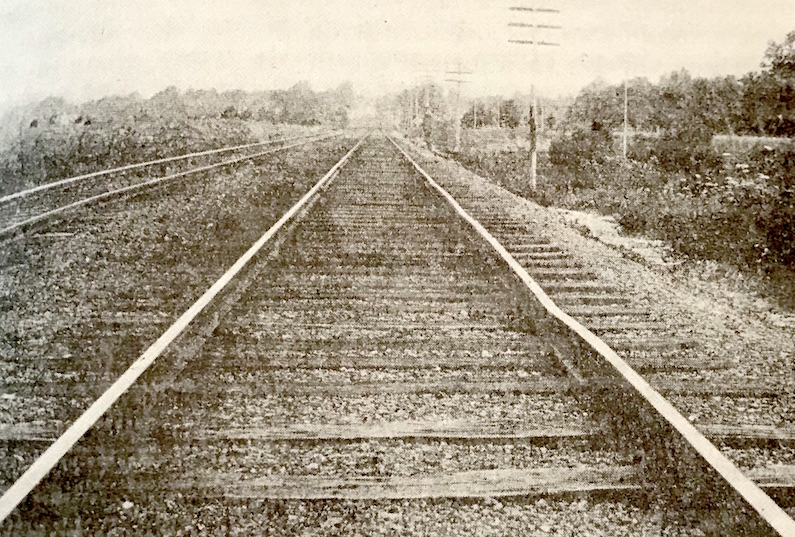(dropdown menu) Balancing Problems with the R-1'supdated 22 February 2022 While the
performance of the R-1's initially exceeded
the railroad's expectations, shortly after the
locomotives entered service, problems with the
counter-balancing of the locomotives' running
gear became apparent. Although the R-1's were
balanced per the Association of American
Railroad's (AAR's) latest published
recommendations of 1934, at high speed it was
found that the main drivers actually left the
rails and repeatedly slammed back down,
kinking rails and damaging track alignment for
miles. Both Baldwin and Atlantic Coast Line
engineers spent much time analyzing this
issue. High speed cameras were installed on at
least one locomotive which was operated on the
ACL mainline, and analysis of these films
showed that the main drivers were actually
leaving the rail when the locomotive was at
high speed (~80 MPH). After much investigation
by Baldwin and ACL engineers, the locomotives'
counter-balancing was reduced by removing a
significant amount of balancing material from
the drivers and the problem was eliminated. According to
former ACL machinist Jerald McGowan, the
locomotives were not modified immediately,
but one at a time as they came into the
shops for overhaul. As a result, these
modifications were still being carried out
after WWII. The unmodified locomotives were
used in fast freight service, where speeds
were lower, until the modifications had been
carried out at which time they were used in
passenger and fast freight service. 6
of the engines were additionally modified with
lightweight main rods, pistons, piston rods,
and crossheads to further improve their
balance. The root of this problem is that the driving wheels of a 2-cylinder conventional steam locomotive cannot be perfectly balanced. If you'd like to read more about the physics and engineering behind the balancing of a steam locomotive's driving wheels, this "white paper" at the Coalition for Sustainable Rail (CSR), co-authored by me, provides detailed information: https://csrail.org/s/wp_slrwd_2-1.pdf Although the balancing calculations were correctly made according to the existing engineering standards when these locomotives were designed, forces were at work on the running gear of the locomotives which were beyond the capabilities of the engineering of the 1930's to analyze. The interaction of the driving wheels, machinery of the locomotive, the springs on the locomotive, and the rails and roadbed would be a challenge to accurately model even with modern computers. Rules had been established for counterbalancing based on trial-and-error. These rules were found to be outdated when it came to large, modern steam power. The Union Pacific, who built many modern steam locomotives in the 1930's and 1940's, ignored the AAR's recommendations and developed their own guidance for balancing and avoided the problems that plagued these locomotives. Unfortunately, as a result of these problems and competitor Seaboard Air Line's success with new EMD diesel-electric locomotives, the ACL's successive new motive power purchases were all diesel. Some other railways with modern steam power built about this time (New Haven 4-6-4's, Pennsylvania 2-10-4's) suffered similar problems. These problems were significant in discouraging further purchases of modern steam power and unfortunately accelerated the change to diesel-electric motive power in the U.S. The photo below, possibly taken on the ACL, shows the results of an improperly balanced steam locomotive at high speed.
 Photo of Damaged Rails from Ralph P. Johnson's book "The Steam Locomotive"The R-1's were
overhauled at the ACL shops in Tampa, Florida,
as they were too large for the road's
backshops in Rocky Mount, North Carolina.
Tampa is southwest of the ACL's Jacksonville
to Richmond mainline, which required the
locomotives to stray from their usual
operating territory when heavy repairs were
required. The R-1's were limited to 40 MPH
over most of this line, and even slower over
some bridges, so this must have been a
headache for the railway. The running
gear problems experienced by the R-1's and
some other contemporary steam locomotives were
a significant factor in Baldwin's promotion of
"duplex" steam power, such as the Pennsylvania
Railroad's T1 4-4-4-4's. A duplex
4-4-4-4 substituted 4 smaller cylinders and
main rods for the 2 large cylinders and main
rods of a 4-8-4. This improved the balance of
the running gear through the use of smaller,
lighter parts. It also reduced bearing loads
and improved steam distribution. However,
duplex drive did increase the complexity of
the locomotive and the Pennsylvania Railroad's
experience indicates that duplexes tended to
be "slippery", requiring more careful handling
than conventional steam locomotives.
 This rendering of a streamlined ACL 4-4-4-4, marketed to the ACL by Baldwin in 1939, was done by famed Industrial Designer Otto Kuhler. This locomotive would have featured a centipede tender, Walschaerts valve gear, roller bearing rods, and a full-width diaphragm cab. However, after their trying experiences with the R-1's and successes with new EMD passenger diesels, the ACL was done with new steam purchases. With the exception of some second-hand 4-8-2's reluctantly purchased during WWII, all of the ACL's subsequent motive power purchases were diesel-electric.
|
Site launched May 16, 2003